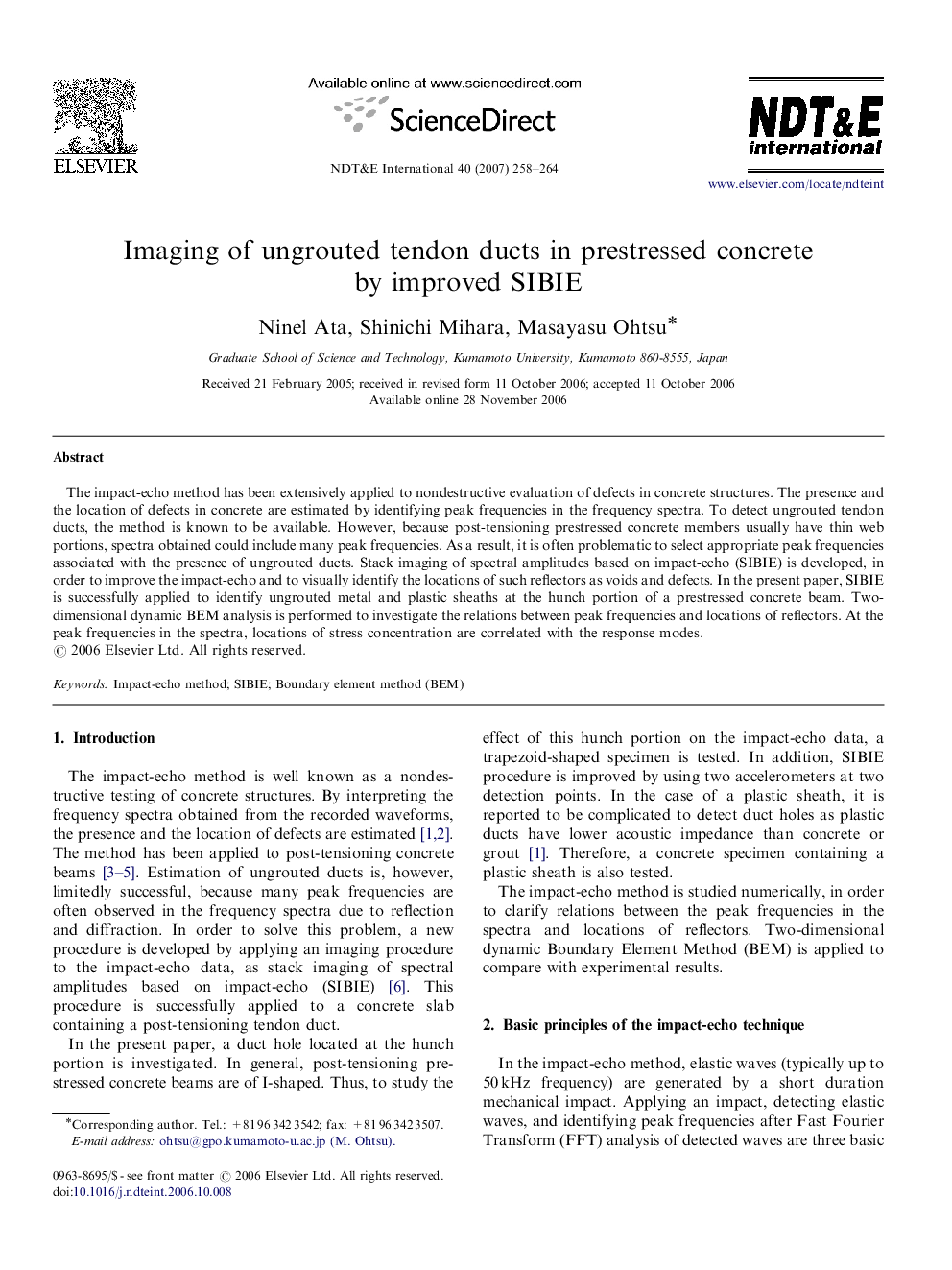| Article ID | Journal | Published Year | Pages | File Type |
|---|---|---|---|---|
| 295733 | NDT & E International | 2007 | 7 Pages |
The impact-echo method has been extensively applied to nondestructive evaluation of defects in concrete structures. The presence and the location of defects in concrete are estimated by identifying peak frequencies in the frequency spectra. To detect ungrouted tendon ducts, the method is known to be available. However, because post-tensioning prestressed concrete members usually have thin web portions, spectra obtained could include many peak frequencies. As a result, it is often problematic to select appropriate peak frequencies associated with the presence of ungrouted ducts. Stack imaging of spectral amplitudes based on impact-echo (SIBIE) is developed, in order to improve the impact-echo and to visually identify the locations of such reflectors as voids and defects. In the present paper, SIBIE is successfully applied to identify ungrouted metal and plastic sheaths at the hunch portion of a prestressed concrete beam. Two-dimensional dynamic BEM analysis is performed to investigate the relations between peak frequencies and locations of reflectors. At the peak frequencies in the spectra, locations of stress concentration are correlated with the response modes.
